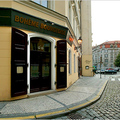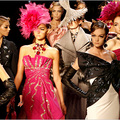
Munich Airport, with its single terminal, is known for efficiency and short layovers for transfers.
Correction Appended
AS a former American Ambassador to Morocco and now an international business consultant focused primarily on Eastern European markets, Michael Ussery has spent his career perfecting the art of the European airport transfer. Over the past decade he has logged more than 110 flights between his Washington base and Europe and the Middle East.
“There was a lot of trial and error,” Mr. Ussery said. “But at some point in the late 1990s I found Vienna airport to work best for me, and I have been flying through it ever since.”
As travel expands throughout Europe and the Middle East, Americans are increasingly having to trade nonstop flights for journeys with pit stops along the way. Many are unprepared and unaware of the potential connection headaches awaiting them.
With major airports from London to Madrid adding terminals, and already sprawling hubs like Frankfurt and Charles de Gaulle in Paris operating at full capacity, airport waits of over an hour have become frustratingly commonplace. Add in limited runway capacity, delays on arriving flights and frequent ground crew strikes, and “connecting between flights is simply inconvenient, unreliable and stressful,” according to Henry Harteveldt, principal travel analyst with Forrester Research in San Francisco.
Yet as travelers like Mr. Ussery can attest, “transiting” through Europe need not be a nightmare. The trick is knowing which airports most efficiently link American gateways with the maximum number of onward destinations — offering the quickest journey times between gates, along with high-quality restaurants and lounges along the way.
“The key factor here really is speed,” said Edward Plaisted, chief executive of Skytrax, a London-based consultancy specializing in traveler-satisfaction surveys.
In its most recent annual survey of some seven million passengers from 93 countries, Skytrax named Munich Airport the best airport in Europe, and No. 4 in the world. Skytrax respondents specifically noted Munich’s “service, efficiency ... and the ease of the transit process” as key components of its appeal, the survey report said. “While Munich still cannot rival Frankfurt in terms of service from the U.S., for connecting it really is the best example in Europe today,” Mr. Plaisted said of the airport, which saw 10 million transit passengers last year, an increase of more than 7 percent from 2005.
Indeed, connection times in Munich average just 30 minutes, compared with 45 minutes in Frankfurt, 50 minutes in Amsterdam and up to two hours in both London Heathrow and Paris Charles de Gaulle, according to Munich airport officials. And with a new daily nonstop to Denver starting this summer on Lufthansa, there are now direct Munich flights from 13 United States cities, linked to 383 weekly onward flights to Eastern and Southern European destinations. Although time savings can vary by season, flying via Munich can prove prudent. For instance, a flight from Kennedy Airport to Naples, Italy — for which there are few nonstops — can require more than three hours of layover at Heathrow on British Airways, while flying Lufthansa via Munich requires a layover of less than an hour. The Lufthansa flight takes off later, but arrives in Naples some two hours ahead of British Airways.
Much of Munich’s success is attributed to its layout. It is a 15-year-old structure designed as a single terminal and purpose-built as a transit hub. It’s a contrast to most of its regional counterparts — relics of mid-20th-century aviation architecture with terminals added as needed, often far from the original center.
But Munich is not the only central European airport that makes transiting relatively easy to bear. With layovers even at the most efficient European airports occasionally stretching beyond a few hours, easy access to a city center is a key lure for many frequent travelers. George Antoniadis, chief executive of Alpha Flying, an airplane leasing company based in Manchester, N.H., says the 15-minute train trip between downtown Zurich and its main airport is part of the reason he flies only via Zurich on his twice-monthly journeys between Boston and Athens. “It’s fully integrated into the urban life of the city, so you can easily jump out to catch some air and then quickly get back to your next flight,” he said. Zurich was ranked as the No. 2 airport in Europe by Skytrax.
When choosing to stay in the airport, Mr. Antoniadis says his transfer times at Zurich average a mere 15 minutes, thanks to its small size and essentially single-terminal layout. It’s this kind of ease that has made him a Zurich — and Swiss International Air Lines — loyalist, despite far greater numbers of Boston flights on Lufthansa, British Airways or Air France.
Mr. Ussery feels much the same about Vienna Airport and Austrian Airlines, as does Douglas Combs, a Washington-based private equities investor who travels 200 days a year, often to Eastern and Central Europe. “If I am not going to Paris or London, I am flying via Vienna,” Mr. Combs said. “There’s free Wi-Fi, the city center is just 20 minutes away, and I am usually between terminals in under five minutes.”
While Zurich and Vienna continue to dominate routes connecting to Eastern and Southern Europe, Munich is expanding on its flights to India and the Middle East, including new summer flights to both Riyadh and Jeddah in Saudi Arabia. The moves come as both regions (the Persian Gulf most dramatically) are inaugurating nonstop flights to the United States and building airports aimed at transcontinental transit passengers.
For the moment, Dubai “remains the best airport in the Middle East out of what’s available,” said Mr. Plaisted of Skytrax. The airport’s success is almost single-handedly due to Emirates, Dubai’s national carrier, which not only flies some of the most luxurious cabins in the sky — with dine-on-demand “room service” and in-suite minibars in first class — but offers three daily flights to New York efficiently linked to extensive onward connections throughout India, Asia and Australia.
Emirates’ separate morning flights to Sydney and Melbourne, for instance, depart just two hours after their first New York arrival, while Emirate’s Delhi, Bombay and Bangalore connections are also under two hours. With Delta’s new nonstop from Atlanta operational and Emirates introducing a nonstop Houston flight in December, Dubai International Airport is now a viable transit option for Southeastern and Midwestern fliers, as well.
Still, with Dubai Airport, now sprawling and struggling to cope with some 29 million annual passengers, experienced travelers are beginning to look elsewhere for stress-free Gulf transit points. “While Dubai certainly offers connectivity to almost every place in the world, the airport is just too big, too busy and lacks things to do,” said Phil McGrane, director of Dubai-based 3P Events, which produces corporate events, who regularly flies between regional capitals and the United States and Britain. “I prefer Abu Dhabi, which is small, compact and easy to navigate. The only thing lacking are good coffee stations.”
Mr. Plaisted of Skytrax confirms that the Persian Gulf will see the next great battle of the airport hubs, as both Doha and Dubai complete entirely new airports and Abu Dhabi spends billions of dollars improving its own.
In Asia, Shanghai and Beijing are also spending billions on new or improved airports — though sluggish Chinese bureaucracy and inconsistent visa policies will make it difficult for them to compete with regional hubs like Hong Kong or Singapore for United States-based passengers. And Mr. Plaisted says Warsaw, Budapest and especially Prague airports offer acceptable levels of ease and efficiency for connections to the rest of Eastern Europe. “Still,” he added, “service can vary greatly here depending on the specific airline.”
Correction: September 16, 2007
The Heads Up column and a picture caption on Sept. 9 about making connections on international flights incorrectly described the Munich Airport. It consists of two terminals, not one the one built 15 years ago and another one added in 2003.






